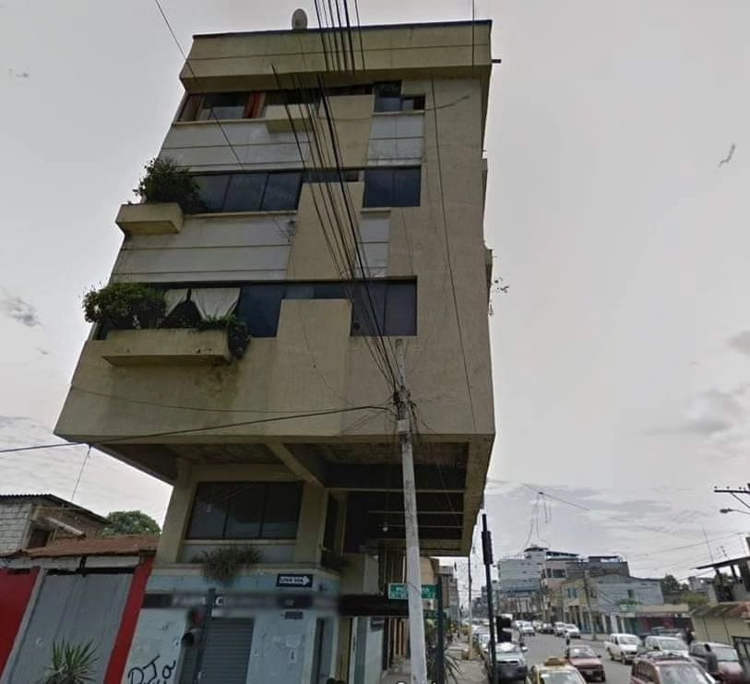From the outside, this house in Newport, Oregon, looks pretty ordinary, with yellowed brick walls, white cladding, and a two-car garage. But you’ll be surprised to learn that inside it’s actually an opulent Renaissance-era palace complete with hand-carved doors, stained-glass windows, and centuries-old antique decor.
The unique house belongs to a member of the British nobility – the Right and Honorable Dowager Countess of Shannon, Almine Barton – apparently has excellent reason for maintaining the striking contrast between the spectacular interior and rather drab exterior – taxes.

Born in South Africa, Barton immigrated to the US and married a local attorney before she purchased this house in 1979. After they divorced she travelled to the UK, where she met and married Richard Bentinck Boyle, the ninth Earl of Shannon. Years later, having travelled the world, Barton realised that it was an “absolute gem” to raise children in Newport.

“Three blocks you can walk down to these pristine white beaches,” she said. “It’s a safe little town and people are friendly. If you forget your wallet somewhere, they say, ‘Come back and pay me next time.’” So she decided to return to the 3,212-square-foot, three-bedroom, three-bathroom house she’d previously purchased, but also to add a touch of class to the unimpressive interior.

“It was an ordinary suburban house,” she told Yahoo Real Estate. “The owner built it with just basic materials in a very, very sturdy way. But when I went in and saw the small little space, it just didn’t feel right to me.” So she took on the task of converting it into a dwelling fit for nobility, while leaving the exterior intact to keep her tax bill as low as possible.

Barton took her time with modifications, changing each aspect of the house one year at a time, spending thousands of dollars over 40 years. She first knocked down walls to create a large front foyer that opens up into a grand living room. She then remodelled the old ceiling in the living room and installed new raft beams with intricate gilding. “If you take one side of the molding and ungild it, it runs something like $16 per inch,” she said.

She had the walls covered in moire silk and French Schumacher silk satin, and installed milled oak floors finished with a special Jacobean brown stain. These materials were so expensive that some of the craftsmen were actually afraid of damaging them. Barton had to spend months looking for someone willing to install the $150 a yard Schumacher fabric on the walls. “They were scared to mess it up because of the costliness of the fabric,” she said. “The man that hung that wallpaper used to come in drunk every day because he was nervous of messing it up.”

The windows were replaced with hand-rolled glass or stained glass sourced from cathedrals. The master bedroom upstairs features a pair of cathedral windows depicting Peter the Apostle that were found in an attic in England. There are stained-glass bay windows from an old English church downstairs, as well as two 18th century stained-glass windows from Lancaster cathedral. Since the colored windows make the house darker than usual, Barton compensated for it by choosing fabrics and colors that reflect light to decorate the rest of the house. “It’s like living inside a Rembrandt painting,” she said.

Barton slowly added plush furnishing and antique decor pieces to the house – an Australian lead crystal chandelier, ancient books dating as far back as the 17th century, drapes worth $14,000, handcrafted silk rugs, Victorian-era wood furniture, antique cabinets made from violin wood, and Italian stucco work.

Sadly, Barton suffered a stroke a couple of years ago, and has found it difficult to maintain her palatial home since then. After much deliberation, she’s reached a difficult decision – to sell the home that has been her “work of art in progress” for the past four decades. She’s settled on a price of $399,000, but she isn’t willing to let it go to anyone who might try to dismantle the interiors and sell them off. “I’m embarrassed to say I feel somewhat sentimental about it,” she said. “The artistry in it, the curtain that matches the rugs that matches the upholstery.”

“I’ll work with somebody who can see what I’m seeing in terms of the value, who wouldn’t tear it all apart and sell it piece by piece,” she added. “I sound a bit foolish, but it would be like taking the Lincoln Memorial apart to sell its bricks. I’m bending over backwards to sell it furnished.” She’s willing to include all the antique furnishings for an extra price of $50,000.

According to real estate experts, the price Barton is quoting is about ‘average’ for the property’s size and interiors. “In Portland, that will hardly even buy a condo,” she said.
Photos: Realtor






